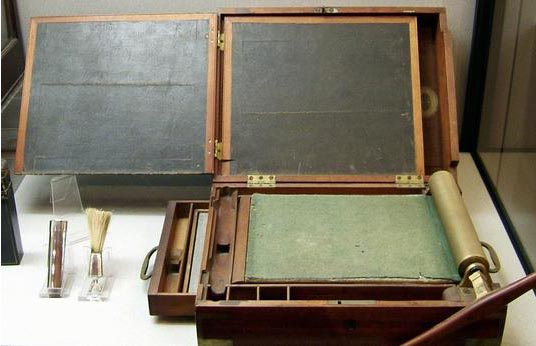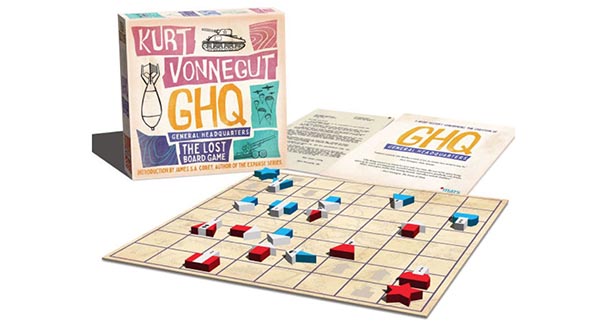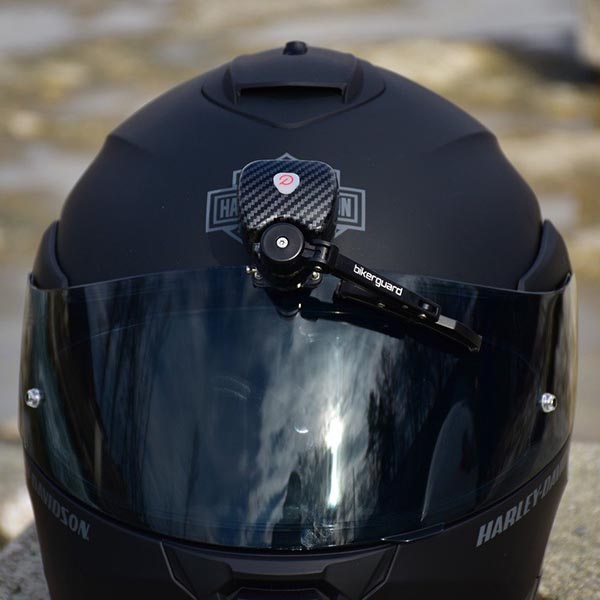
Wicked Indeed
We here at WhatTheyThink are no strangers to typos, but as far as we know nothing like this. Via Forbes:
Mattel’s Wicked movie dolls have been pulled from at least three major retailers following a packaging misprint that lists a porn site.
The URL printed on the packaging for the dolls—Wicked.com—is actually a pornography site. The proper address should have been WickedMovie.com. (That sounds even more like a porn site.) The dolls were immediately pulled from store shelves and Amazon, and parents were encouraged by Mattel to discard the packaging or obscure the link. As you might expect, dolls with the original intact packaging are big on eBay.
A search of a completed listings on eBay just prior to the publication of this article showed all 11 dolls in Mattel’s Wicked line going for $1,000, while another showed a pair of Glinda and Elphaba dolls selling for nearly $250.00.
The article makes it sound like they are blaming the packaging printer when they should be blaming Mattel or whoever approved the package design.
WattTheyThink
We all know the name James Watt. No, not President Reagan’s Interior Secretary, but the Scottish inventor who invented the steam engine, kicking off the Industrial Revolution. But did you know that Watt had also invented the “copying press” or, essentially, the first copier. Says the BBC:
James Watt invented this document copier to relieve him of the tedium of making copies of his plans and drawings. The press copies a written document by pressure onto thin, translucent, unsized paper, producing a reversed copy from the back. Watt patented the device in 1780 and his company continued to produce it long after his death. The principle on which the machine is based remained in use until the arrival of modern photocopiers.

It’s probably a good thing that Watt never turned into a generic word for copying the way Xerox did; can you imagine handing a document to an administrative assistant and saying, “Please watt this.” It would quickly devolve into an Abbott & Costello routine.
Anyway, we bring this up because, via Laughing Squid, YouTube channel Old Typewriters and Calculators demonstrated Watt’s press.
Take Off
Graphic designers know all too well that typefaces can lead them down some unusual avenues. For example, you see a font out in the wild you’d just love to use, but its name and foundry are not immediately discernible. So you doggedly go down a rabbit hole trying to unearth any information about it whatsoever.
Via Print magazine, Lukas Scheider, founder of Revolver Type Foundry, went down one such rabbit hole.
Schneider saw a vintage counting game for kids from 1979 and the type caught his eye. He was unable to find the typeface, so he engaged a Berlin graphic designer and type expert, Florian Hardwig, who finally tracked down the mystery typeface: Airport Spotlight, a spin-off of Matthew Carter’s Airport, a typeface designed in 1960 for London Airport (now Heathrow).
Not content with that, Schneider dug into the history of Heathrow Airport and the history of airport wayfinding and uncovered books that reference Carter’s typeface (including a1970 wayfinding signage guide called A Sign System Manual, by Theo Crosby, Colin Forbes, and Alan Fletcher). Schneider eventually ended up talking with Carter himself.
Airport and Airport X are the results of his research, releasing a modern version of Carter’s iconic, mid-century typeface 64 years after it debuted. Schneider’s Airport is not simply a direct digitization—he played with the aperture proportions, modulation, and x-height, thus enabling the family to be used at smaller sizes than the original version. Stylistic alternatives, glyphs, and special characters add additional language support and iconography harkening back to the original typeface’s wayfinding purpose.

That’s a Stretch
A popular recent development in display technology is foldable displays. But now that is passé—thanks to a new display by LG. How about a stretchable display? Via Core77:
This month LG showed off a prototype of their stretchable display, which can be expanded up to 50%, stretching from 12" to 18". The micro-LED display has a 100ppI resolution and displays RGB.

OK, that’s all well and good. But…why would anyone want to do this to a display? Well…
“Stretchable displays are not only thin and lightweight but also capable of adhering to irregularly curved surfaces like clothing and skin,” the company writes. “They are expected to be widely applied in various industries, from fashion and wearables to mobility.”
As an example, they showed the screen stretched over a contoured automotive interior panel.

Pretty neat.
Always Leave a Note
Via Boing Boing, Jan Miksovsky needed a way to help his mother keep track of things after she began experiencing amnesia. So, he set up an E Ink display (based on a BOOX Note Air2) for her on which he and his siblings could post short messages. It needed to be large enough to easily be read without glasses, required no interaction to wake or read, was not prone to network failures, and “was not enshittified with a subscription service or proprietary app store.”
He called it the MomBoard.

Great idea—and it would be practical for any household to leave notes for people. Because we all know that you should always leave a note.
Breakfast of Champions
Did you know that author Kurt Vonnegut invented a board game? Back in the 1950s, before he became a successful author—his 1952 debut novel Player Piano was not a hit—he decided he needed to supplement his income while working on the follow-up, Sirens of Titan. So, of course, what could be better than inventing and marketing a board game? So, in 1956 he created one called GHQ (General Headquarters)—using his eight-year-old son Mark as a tester—and attempted to sell it to game companies. Alas, no one was interested. So into the archives the notes for it went and once Vonnegut began to support himself as a writer, he apparently never revisited the idea.
We bring this up because, via GoodNewsNetwork, game designer and historian Geoff Engelstein decided to revive the idea and market it.
“It took several years working with the Vonnegut family and Indiana University, but ultimately, we were able to locate his original notes on the game, and sample pieces.”
As for commercializing it, what better partner for a game designed by an author than a bookseller, in this case Barnes & Noble.
“When Geoff approached me about the Kurt Vonnegut board game, I knew we had to be a part of the story,” says Barnes & Noble Sr. Merchandise Manager of Toys & Games Sabrina Falcone, who helped bring the project to fruition.
So what is the game, exactly? No, it does not involve Kilgore Trout or Malachi Constant, or an attempt to keep Ice-nine from destroying the planet.
During the fast and strategic two-person battle game played on an 8×8 inch checkerboard, players can command infantry, armored vehicles, artillery, and the powerful airborne regiment, maneuvering to capture the opposing headquarters.
Recommended for ages 14 and up, GHQ, which usually takes 20-40 minutes to complete, features wooden pieces and a 24-page commentary booklet showing Kurt Vonnegut’s design notes to give insight into his creative process.

A steal at $34.95. If any Vonnegut fans are on your Christmas list, order a copy here.
Scissor Hands
All of us at one time or another have played “Rock Paper Scissors,” the game whereby you shape your hand into one of the three objects and one beats the other. The rules are simple: Rock beats (i.e., crushes) Scissors, Scissors beats (i.e., cuts) Paper, and Paper beats (i.e…uhhh….hmm…covers?) Rock. OK, not a lot of logic there, but it’s a popular way for people to make a decision about something.
The game itself is actually much older than we might think, and Lance Geiger of The History Guy traces its origin to 3rd century China.
The earliest known mention of a rock paper scissors like game comes from a 17th century Ming Dynasty book from China. The author refers to the game as shoushiling, meaning “hand commanding” and claims that the game dated to the Han Dynasty in the 3rd Century.
Did they have scissors in 3rd century China? Probably not, but the Ming Dynasty book specifies that the three finger gestures were frog, venomous centipede, and snake. Frog eats centipede, snake eats frog, and centipede burrows into snake. It makes about as much sense.
Graphene Makes Great PETs
Was it a good week for graphene news? It’s always a good week for graphene news! Fractal Graphene powder can dramatically improve the performance and sustainability of PET bottles. From (who else?) Graphene-Info:
As the global polyethylene terephthalate (PET) packaging industry faces unprecedented regulatory pressure to reduce virgin plastic consumption, HydroGraph has found that its Fractal Graphene powder (FGA-1) can dramatically improve the performance and sustainability of PET bottles.
… Based on current global PET bottle production, adoption of this FGA-1 technology could achieve a potential reduction of 5 million tonnes of plastic usage annually (20% of current consumption). In an ideal scenario where FGA-1 technology is fully commercialized with PET:rPET blends of 50:50, the emissions reduction from using 20% less overall PET in bottles could represent a reduction of more than 8 million tonnes of CO2.
Wipe Out
We are not motorcyclists, so this may or may not be a good idea in practice, but on paper (or screen) it sounds pretty useful: a windshield wiper for motorcycle helmets. Says Core77:
This Bikerguard invention, created by two engineers in Slovenia, is a remote-controlled wiper blade for motorcycle helmet visors. You do have to drive two screws through the top of your visor to attach the mounting base, and you can then pop the Bikerguard on and off as needed. A wireless remote control attaches to your bike's handlebars.

The developers claim that motorcycle police bodies in Slovenia, Hungary and Germany “are in the process of evaluating BIKERGUARD for potential integration into their motorcycle fleet.” In the meantime, they sell these online for €319 (USD $339) a pop. A three-pack of replacement wiper blades runs €25 (USD $27).
A Pizza the Action
Are you an avid gamer? Do you also avidly consume pizza? Well, thanks to Pizza Hut, you don’t have to indulge one at the expense of the other. Via Mental Floss:
The pizza heater—officially dubbed the PIZZAWRMR—is a 3D-printed box that sits atop your PlayStation 5. According to the product’s official website, it uses the gaming console’s air pipe to keep the food at the desired temperature. The design mimics a Pizza Hut box, with the iconic red roof carved onto the hood and the logo printed on the front. The PIZZAWRMR can fit a decent amount of slices (at least six, according to the YouTube advertisement).
There appears to be no stipulation that the pizza to be warmed has to necessarily be from Pizza Hut. Or even pizza at all, come to think of it.
Light of My Life—Literally
Here’s a headline you don’t see every day. From Gizmodo: “Biologists Just Created Solar-Powered Hamster Cells.” Which begs the question, do we really need solar-powered hamsters? But as to what this means:
How would you like it if you could recharge just by sitting out in the Sun? The ability to use sunlight to convert carbon dioxide (CO2) and water into oxygen and energy is traditionally the exclusive domain of plants and algae. Now, however, researchers in Japan have successfully created photosynthetic animal cells.
The cells responsible for photosynthesis are called chloroplasts. Researchers took chloroplasts from red algae and injected them into hamster cells—with the result that they could now photosynthesize light. The results are detailed in the journal Proceedings of the Japan Academy.
The end goal of all of this is not to create solar-powered animals, or even humans someday. Rather:
the team’s vision for the future application of this technology is more practical. They suggest that “planimals,” as they’re called, could be incorporated into artificial tissue engineering. Lab-grown tissue sometimes struggles to grow because of a lack of oxygen, which could be solved by introducing photosynthetic animal cells.
If humans ever did develop this ability, it would ruin picnics; if you didn’t need physical food, you’re basically just sitting outside on a blanket. Still, there’d be no ants, so there’s that.
Ranch Card
It’s coming into Christmas card season again, and for those on your list who are avid ranch dressing fans, Hidden Valley has put out a ranch dressing-themed Christmas card. Says who else?) Food & Wine:
Starting November 21 at 8 a.m. PT, gift givers can buy the ranch enthusiasts in their lives something from the new Hidden Valley Ranch Holiday Card Collection. However, this is more than just some measly, plain blank card. Instead, this limited-edition collection lets you send a holiday greeting to those you love that comes filled with Hidden Valley Ranch. (It's less messy than it sounds, we promise.)
We should hope so. The cards come in packs of eight, and each card comes with a to-go packet of ranch dressing.
The adorable cards include sweet holiday motifs that, when you look closer, you realize are all made with the perfect ranch pairings, including a snowman made of mashed potatoes, a Christmas tree constructed out of French Fries, a Champagne tower that's actually made of wings, and a gift-wrapped slice of pizza.
Whoa whoa whoa—pizza?!
“Every year, people go to great lengths to send the perfect holiday card. This year, Hidden Valley Ranch created that perfect card to show the ranch fans in your life you're thinking of them this holiday season"

This Week in Printing, Publishing, and Media History
November 18
1787: French physicist and photographer, and inventor of the daguerreotype, Louis Daguerre, born.
1836: English playwright and poet W. S. Gilbert born.
1865: Mark Twain’s short story “The Celebrated Jumping Frog of Calaveras County” is published in the New York Saturday Press.
1883: American and Canadian railroads institute five standard continental time zones, ending the confusion of thousands of local times. Well, it was about time.
1922: French author and critic Marcel Proust dies (b. 1871).
1928: Release of the animated short Steamboat Willie, the first fully synchronized sound cartoon, directed by Walt Disney and Ub Iwerks, featuring the third appearances of cartoon characters Mickey Mouse and Minnie Mouse. This is considered by the Disney corporation to be Mickey’s birthday.
1963: The first push-button telephone goes into service.
November 19
1909: Austrian-American theorist, educator, and author Peter Drucker born.
1916: Samuel Goldwyn and Edgar Selwyn establish Goldwyn Pictures.
1954: Télé Monte Carlo, Europe’s oldest private television channel, is launched by Prince Rainier III.
1955: National Review publishes its first issue.
1959: The Ford Motor Company announces the discontinuation of the unpopular Edsel.
1967; The establishment of TVB, the first wireless commercial television station in Hong Kong.
1998: Vincent van Gogh’s Portrait of the Artist Without Beard sells at auction for US$71.5 million.
2006: Nintendo's first video game console with motion control, the Wii, is released.
November 20
1805: Beethoven's only opera, Fidelio, premieres in Vienna.
1908: British-American journalist and author Alistair Cooke born.
1910: Russian author and playwright Leo Tolstoy dies (b. 1828).
1924: Polish-American mathematician and economist, and coiner of the term “fractal,” Benoit Mandelbrot born.
1936: American novelist, essayist, and playwright Don DeLillo born.
1969: The Plain Dealer publishes explicit photographs of dead villagers from the My Lai Massacre in Vietnam.
1985: Microsoft Windows 1.0 is released.
November 21
1676: The Danish astronomer Ole Rømer presents the first quantitative measurements of the speed of light.
1694: French historian, playwright, and philosopher Voltaire (né François-Marie Arouet) born.
1783: In Paris, Jean-François Pilâtre de Rozier and François Laurent d'Arlandes, make the first untethered hot air balloon flight.
1877: Thomas Edison announces his invention of the phonograph, a machine that can record and play sound.
1898: Belgian painter René Magritte born.
1902: Polish-American novelist and short story writer, Nobel Prize laureate Isaac Bashevis Singer born.
1905: Albert Einstein’s paper that leads to the mass–energy equivalence formula, E = mc², is published in the journal Annalen der Physik.
1945: American humorist, newspaper columnist, and actor Robert Benchley dies (b. 1889).
1969: The first permanent ARPANET link is established between UCLA and SRI.
November 22
1819: English novelist and poet George Eliot (née Mary Ann Evans) born.
1869: French novelist, essayist, and dramatist, Nobel Prize laureate André Gide born.
1928: The premier performance of Ravel’s Boléro takes place in Paris.
1935: The China Clipper inaugurates the first commercial transpacific air service, connecting Alameda, California with Manila.
1963: English novelist and philosopher Aldous Huxley dies (b. 1894).
1977: British Airways inaugurates a regular London to New York City supersonic Concorde service.
1995: Toy Story is released as the first feature-length film created completely using computer-generated imagery.
November 23
534 BC: Thespis of Icaria becomes the first recorded actor to portray a character onstage.
1644: John Milton publishes Areopagitica, a pamphlet decrying censorship.
1888: American comedian and musician Harpo Marx (né Adolph Marx) born.
1889: The first jukebox goes into operation at the Palais Royale Saloon in San Francisco.
1924: Edwin Hubble's discovery, that the Andromeda “nebula” is actually another island galaxy far outside of our own Milky Way, is first published in The New York Times.
1936: Life magazine is reborn as a photo magazine and enjoys instant success.
1963: The BBC broadcasts the first episode of An Unearthly Child (starring William Hartnell), the first story from the first series of Doctor Who, which is now the world’s longest running science fiction drama.
November 24
1713: Irish novelist and clergyman Laurence Sterne born.
1859: Charles Darwin publishes On the Origin of Species.
1877: Anna Sewell’s animal welfare novel Black Beauty is published.
1962: The influential British satirical television program That Was the Week That Was is first broadcast.
November 25
1915: Albert Einstein presents the field equations of general relativity to the Prussian Academy of Sciences.
1952: Agatha Christie’s murder-mystery play The Mousetrap opens at the Ambassadors Theatre in London. It will become the longest continuously-running play in history.
1968: American novelist, critic, and essayist Upton Sinclair dies (b. 1878).
1974: English singer-songwriter and guitarist Nick Drake dies (b. 1948).
November 26
1789: A national Thanksgiving Day is observed in the United States as proclaimed by President George Washington at the request of Congress.
1863: United States President Abraham Lincoln proclaims November 26 as a national Thanksgiving Day, to be celebrated annually on the final Thursday of November.
1912: American journalist Eric Sevareid born.
1917: The Manchester Guardian publishes the 1916 secret Sykes-Picot Agreement between the United Kingdom and France.
1919: American author and publisher Frederik Pohl born.
2003: The Concorde makes its final flight.
November 27
8 BC: Roman soldier and poet Horace dies (b. 65 BC).
1809: The Berners Street hoax was perpetrated by Theodore Hook in the City of Westminster, London.
1839: In Boston, Massachusetts, the American Statistical Association is founded, against all odds.
1852: English mathematician and computer scientist Ada Lovelace dies (b. 1815).
1924: In New York City, the first Macy’s Thanksgiving Day Parade is held.
1942: Guitarist Jimi Hendrix born.
November 28
1628: English preacher, theologian, and author (Pilgrim’s Progress) John Bunyan born.
1814: The Times of London becomes the first newspaper to be produced on a steam-powered printing press, built by the German team of Koenig & Bauer.
1859: American short story writer, essayist, biographer, historian Washington Irving dies (b. 1783).
November 29
1832: American novelist and poet Louisa May Alcott born.
1877: Thomas Edison demonstrates his phonograph for the first time.
1972: Atari releases Pong, the first commercially successful video game.
2001: English singer-songwriter, guitarist, and music producer George Harrison dies (b. 1943).
November 30
1667: Irish satirist and essayist Jonathan Swift born.
1835: American novelist, humorist, and critic Mark Twain (né Samuel Clemens) born.
1900: “Either that wallpaper goes or I do”: Irish playwright, novelist, and poet Oscar Wilde dies (b. 1854).
1947: American playwright, screenwriter, and director David Mamet born.
1979: Pink Floyd’s The Wall is released.
1982: Michael Jackson’s Thriller is released. It will become the best-selling record album in history.
December 1
1913: Ford Motor Company introduces the first moving assembly line.














